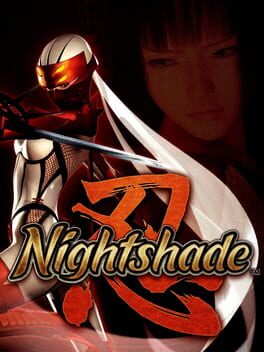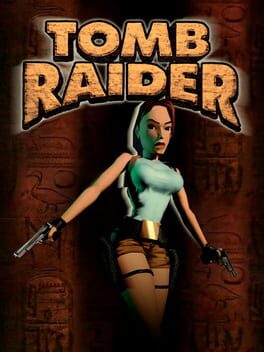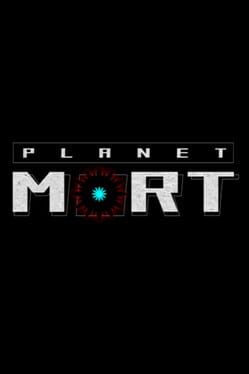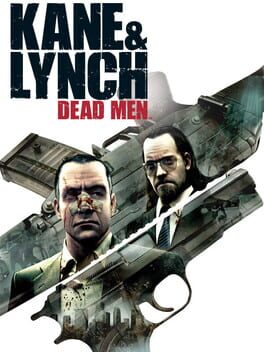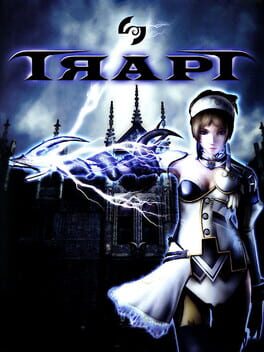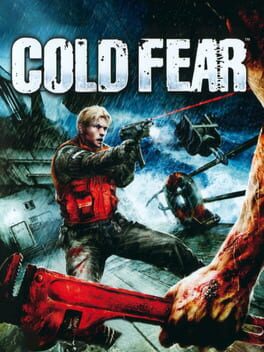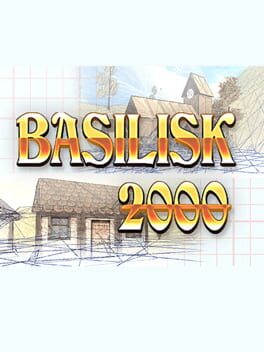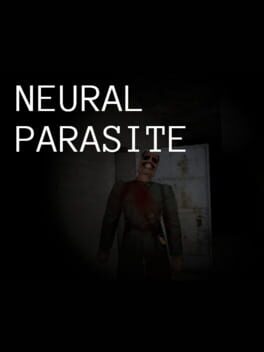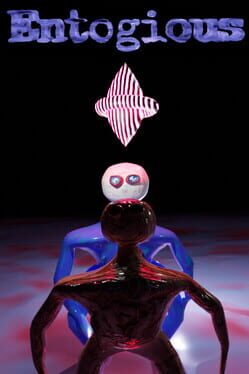EuanDewar
Suffers from a clear desire for an 'adventurous' feel. The towns and outside areas in the first few hours are low on character or inventiveness. It's quite deflating walking into an NPC's house, being greeted with a lovely bit of art for them and then realising all they say is a couple dry lines of dialogue (respect to the snake charmer mind you, that's a great Ys NPC). Loved talking to every person multiple times in 1+2 just to see what cascade of goofy lines they would come out with but quickly gave up on that here. Same goes for some of the cutscenes which agan look great while conveying dull plot details that go straight in one ear and out the other. The ramshackle english fandub is a double-edged sword. It provides a lot of quality charm when at its silly best yet equally it can just be, yknow, amateurish in a way that isn't entertaining and hampers portentous moments that could otherwise imbue mystery into the proceedings. The details of the world as you move through it don't spark anything until about halfway through, at which point they start getting more playful in both writing and design. The dungeons never get crazy but they eventually pull some amusing tricks and the little esoteric interactions you can have within the world that made Ys 1 + 2 so likeable show up more as time goes on.
The change made to how bump slash works is theoretically a fine idea - both diagonal bumping and trapping an enemy against a wall were previously basically just an auto-win so let's neuter them and add some tension back into it. Problem is they didn't replace them with anything. Walking direct towards the enemy but slightly off-center is now the only reliable method of attack, which in addition to getting incredibly dull over the course of a full game becomes frustrating for two reasons: 1) you can now go from full health to dead in quite literally two seconds if you just happened to get caught against a wall by an offscreen enemy or their hitbox does something wonky, and 2) the speed at which some enemies move and the narrowness of the confines you often fight them within are not at all suited to this kind of positioning. It ends up being devoid of difficulty or spice and then all of a sudden it's game over for reasons you couldn't foresee. The bosses are mostly solid though, it's just this moment to moment action that grates.
The OST is fantastic, of course. They definitely had the right ideas in many respects but stretched them out too thin in the pursuit of something more grand. The first two games had a sense of marinating in a small set of lovely places with real charm to them. Goof NPCs you're sad to see go at the end. This one is too eager to move forward in an almost linear fashion and spends too much time on the perfunctory as a result. There's room for that approach in the bumpslash-era Ys format but the balance is off here
The change made to how bump slash works is theoretically a fine idea - both diagonal bumping and trapping an enemy against a wall were previously basically just an auto-win so let's neuter them and add some tension back into it. Problem is they didn't replace them with anything. Walking direct towards the enemy but slightly off-center is now the only reliable method of attack, which in addition to getting incredibly dull over the course of a full game becomes frustrating for two reasons: 1) you can now go from full health to dead in quite literally two seconds if you just happened to get caught against a wall by an offscreen enemy or their hitbox does something wonky, and 2) the speed at which some enemies move and the narrowness of the confines you often fight them within are not at all suited to this kind of positioning. It ends up being devoid of difficulty or spice and then all of a sudden it's game over for reasons you couldn't foresee. The bosses are mostly solid though, it's just this moment to moment action that grates.
The OST is fantastic, of course. They definitely had the right ideas in many respects but stretched them out too thin in the pursuit of something more grand. The first two games had a sense of marinating in a small set of lovely places with real charm to them. Goof NPCs you're sad to see go at the end. This one is too eager to move forward in an almost linear fashion and spends too much time on the perfunctory as a result. There's room for that approach in the bumpslash-era Ys format but the balance is off here
2003
1996
It is mindboggling how influential this game and its PS1-era sequels weren't. They sold countless copies and embedded Lara as a character into the wider pop culture, yet the number of notable games that take direct design inspiration from how they play can likely be counted on one hand. If it has any true lineage to be found it isn't in the likes of Uncharted or the post-Sands of Time Prince of Persia games but rather the work of indies like Bennet Foddy or Anders Jensen's Peaks of Yore. Works that attempt to reinject the feeling of tension into a player's movement abilities. Keeping the level of friction high at all times. However even those games evoke the same sensations via very different control schemes. I am obsessive about discovering new games. I regularly scroll through the ocean of noise that is the Steam new releases queue, hoping to find something neat in the endless procession of porn games and Vampire Survivors clones. I keep track of a million in-development indie projects. I would confidently say I am about as up on what's being made as a single person can get. Yet I never see anything even close to a 'Tomb Raider Clone'. Which is not to say some don't exist somewhere, deep in someone's itch.io page. But the fact that one of the biggest runs of success a series has ever had hasn't spawned a visible scene^ is remarkable in an age where every possible trend from gaming's history, no matter how archaic, is being explored by both indies and megacorps alike.
TR's controls were, are, and forever will be, exceptional. Yes, obviously they are somewhat awkward. But they are also also extremely precise with reliable rules about what works in what situation, how many steps you can take before a jump, which button presses have priorities over others, the exact timing for that last-second leap. Each jump feels chunky, weighty. Even just pulling yourself up onto a ledge has serious tactility to it. It all makes cutting corners with your decisions a no-no, instead nudging you to work through the proressions of your movement thoughtfully - often with pre-planning - or face the neck-breaking consequences. From the beginning of the game till the end there is heart-in-mouth excitement in even the simplest of challenges. This is the ideal. This is how it should be. Make no mistake: the controls can be mastered. It's just that 'mastery' here means a confidence in your actions, becoming more fluid in your transitions between movement states. Not an ascension to platforming godhood. I am both terrible at games and easily annoyed yet no fibre in my being would ever consider these controls 'bad'. They achieve exactly what they aim for and, more importantly, what I desire from them.
The problem, then, is that Core Design... Well they didn't understand the core of what they had designed. There are issues in level design and pacing, yes. Some of the puzzles are a nonsense. But all of that is small potatoes. The main downer is that this game and all of its direct successors are plagued by combat that is fundamentally at odds with the rest of its makeup. Lara moves deliberately. Her enemies move quickly, have wonky hit/hurtboxes and are often sprung on the player out of nowhere. Sometimes they have guns which operate on the same laser-accurate rules as Lara's. They are seemingly made for a different game entirely.
It's not that combat is difficult. Health and ammo is plentiful, dying only ever really happens when taken completely offguard. It's that it's stunningly annoying and fuck me there is a lot of it. Running around in circles holding the shoot button, sometimes doing a flip, the height of strategy being to position yourself directly behind your opponent such that they literally just can't do anything because they have to turn towards you before they inevitably do and grind another chunk off your healthbar. Your healthbar outlasts theirs, they die. You feel nothing other than a pissed off sense of 'thank god that's over'. Rinse, repeat for 15 hours. It only becomes tolerable when avoiding it entirely by just standing on a platform where the enemy cant reach Lara.
It's this aspect that makes the lack of extrapolation on the format from other devs even more unfortunate. I don't blame Core Design for how they formulated things. There's still plenty else it did well (the atmosphere, so thick at all times!). They were doing something new out there on their own when the industry was in a more nascent stage. We've a wealth of knowledge now about this type of game is best handled - hell just take out the combat entirely lads, it isn't absolutely necessary - and few out there keen on putting it to use. Here's to hoping the remasters spark a little something.
^I should note that the early TR games have a wonderfully vibrant modding and level-creation community. Amazing work is being done by a super dedicated group. Eg: https://www.pcgamer.com/meet-the-community-creating-classic-tomb-raider-adventures-in-2021/. Probably the most straightforward partial answer to the question 'where are all the new takes on old Tomb Raider' is 'the people who would make them are making them in Tomb Raider'
TR's controls were, are, and forever will be, exceptional. Yes, obviously they are somewhat awkward. But they are also also extremely precise with reliable rules about what works in what situation, how many steps you can take before a jump, which button presses have priorities over others, the exact timing for that last-second leap. Each jump feels chunky, weighty. Even just pulling yourself up onto a ledge has serious tactility to it. It all makes cutting corners with your decisions a no-no, instead nudging you to work through the proressions of your movement thoughtfully - often with pre-planning - or face the neck-breaking consequences. From the beginning of the game till the end there is heart-in-mouth excitement in even the simplest of challenges. This is the ideal. This is how it should be. Make no mistake: the controls can be mastered. It's just that 'mastery' here means a confidence in your actions, becoming more fluid in your transitions between movement states. Not an ascension to platforming godhood. I am both terrible at games and easily annoyed yet no fibre in my being would ever consider these controls 'bad'. They achieve exactly what they aim for and, more importantly, what I desire from them.
The problem, then, is that Core Design... Well they didn't understand the core of what they had designed. There are issues in level design and pacing, yes. Some of the puzzles are a nonsense. But all of that is small potatoes. The main downer is that this game and all of its direct successors are plagued by combat that is fundamentally at odds with the rest of its makeup. Lara moves deliberately. Her enemies move quickly, have wonky hit/hurtboxes and are often sprung on the player out of nowhere. Sometimes they have guns which operate on the same laser-accurate rules as Lara's. They are seemingly made for a different game entirely.
It's not that combat is difficult. Health and ammo is plentiful, dying only ever really happens when taken completely offguard. It's that it's stunningly annoying and fuck me there is a lot of it. Running around in circles holding the shoot button, sometimes doing a flip, the height of strategy being to position yourself directly behind your opponent such that they literally just can't do anything because they have to turn towards you before they inevitably do and grind another chunk off your healthbar. Your healthbar outlasts theirs, they die. You feel nothing other than a pissed off sense of 'thank god that's over'. Rinse, repeat for 15 hours. It only becomes tolerable when avoiding it entirely by just standing on a platform where the enemy cant reach Lara.
It's this aspect that makes the lack of extrapolation on the format from other devs even more unfortunate. I don't blame Core Design for how they formulated things. There's still plenty else it did well (the atmosphere, so thick at all times!). They were doing something new out there on their own when the industry was in a more nascent stage. We've a wealth of knowledge now about this type of game is best handled - hell just take out the combat entirely lads, it isn't absolutely necessary - and few out there keen on putting it to use. Here's to hoping the remasters spark a little something.
^I should note that the early TR games have a wonderfully vibrant modding and level-creation community. Amazing work is being done by a super dedicated group. Eg: https://www.pcgamer.com/meet-the-community-creating-classic-tomb-raider-adventures-in-2021/. Probably the most straightforward partial answer to the question 'where are all the new takes on old Tomb Raider' is 'the people who would make them are making them in Tomb Raider'
2024
What a strange, delightful surprise. In the most basic terms follows the visual and gameplay design language of an N64 3D platformer but with much wilder flights of fancy than that implies. You can never quite anticipate where you'll go next or what it'll ask of you, dipping into completely different types of game for brief, colourful passages. The platforming itself has a good balance between stiffness and responsiveness, with some satisfying ways it challenges your patience across longer sequences. There's also this unsettling tone bubbling under - and sometimes way above - the surface that's too oblique and unpredictable to ever fall into prosaic 'this retro game is actually haunted, isn't that spooOOoooky!' territory. Great sense of goofy humour on top of all that. The tonal mix carries over to the excellent soundtrack, its instrumental palette contrasting the midi tones you'd expect from a game nodding towards the N64 era against more sinister synth pads. Nails both the whistful atmospheres and the dark ambience.
Obviously there's some cruft. It is after all a no-budget, solo-dev work languishing in the depths of steam new releases. The combat for instance may as well not be there, such is its lack of presence. But it's packed with charm and for some reason it's free? Well worth checking out
Obviously there's some cruft. It is after all a no-budget, solo-dev work languishing in the depths of steam new releases. The combat for instance may as well not be there, such is its lack of presence. But it's packed with charm and for some reason it's free? Well worth checking out
2005
2005
Everybody compares this to Resident Evil 4 but there's a far better - and more fascinating, in terms of considering the dev process/timelines involved - comparison: Resident Evil 3.5, the original version of Resident Evil 4 that they scrapped before pivoting towards the what they eventually released as the classic everyone remembers in 2005. Even a cursory look at when the final RE4 and Cold Fear were announced/shown will tell you that any influence from the former on the latter, if indeed there was any at all, had to be minimal at most.
This game and RE3.5 on the other hand do have one, compellingly specific key thing in common. In the final RE4 the camera was always behind Leon's back, for both normal movement and aiming. This of course eschewed the series conventions of fixed camera angles. In RE3.5 they had the fixed camera angles (with some shifting) but would switch to the over the shoulder view as you aimed your gun. Cold Fear doesn't have strictly fixed camera angles at all times but it has a lot of them and implements this exact same camera dynamic in many cirucmstances. Watch this gameplay for a bit and then go back to the RE3.5 footage linked above.
They're really close! Whether this is the Cold Fear team seeing that early RE3.5 footage (the gameplay linked was first shown at E3 2003) and taking influence or just two companies converging on the same idea I've obviously no clue. Darkworks' previous game, Alone in the Dark: The New Nightmare, was already a fixed camera survival horror so it's a not a huge leap to make. Regardless, it's a curious little detail of gaming history that things played out this way. The ideas of one project that never saw fruition in their original context instead coming to the fore in a game from a different company, only for that game to be consigned to the bargain bin of history as a 'clone' of that original project's final outcome.
This game and RE3.5 on the other hand do have one, compellingly specific key thing in common. In the final RE4 the camera was always behind Leon's back, for both normal movement and aiming. This of course eschewed the series conventions of fixed camera angles. In RE3.5 they had the fixed camera angles (with some shifting) but would switch to the over the shoulder view as you aimed your gun. Cold Fear doesn't have strictly fixed camera angles at all times but it has a lot of them and implements this exact same camera dynamic in many cirucmstances. Watch this gameplay for a bit and then go back to the RE3.5 footage linked above.
They're really close! Whether this is the Cold Fear team seeing that early RE3.5 footage (the gameplay linked was first shown at E3 2003) and taking influence or just two companies converging on the same idea I've obviously no clue. Darkworks' previous game, Alone in the Dark: The New Nightmare, was already a fixed camera survival horror so it's a not a huge leap to make. Regardless, it's a curious little detail of gaming history that things played out this way. The ideas of one project that never saw fruition in their original context instead coming to the fore in a game from a different company, only for that game to be consigned to the bargain bin of history as a 'clone' of that original project's final outcome.
2023
It's absurd how good Mike Klubnika is at making these. The indie 'scene' is so oversatured with short horror games that blend together and leave no impact whatsoever yet Mike's work always stands out. The presentational flair, the consistently tactile gameplay tools, the concepts that are so bleak you simultaneously grimace and laugh when you realise what you're engaging in - every time he drops something new I put money down for it sight unseen and it's never a bad decision. Hope he keeps popping them out for as long as he wants
2023
Went into this one wanting to like it but the core is just decrepit. The initial sensation of 'ooo this is some great PS2 texture work. And a fixed camera? Interesting choice, we might be in for a hidden treat here' turns to mush when you realise you'll become numb to the visual design as you slowly amble through endless identikit hallways, and that the fixed camera serves no real artistic purpose, only antagonising you with offscreen attacks and wonky platforming. Some of the bosses are solid enough but the majority of normal enemies have enraging timing on their movesets, with slow animations but little downtime between attacks meaning that - when combined with your incredibly slow recovery after your own attacks before you can block and how the enemies always appear in groups - you're spending a lot of time waiting, getting in a couple of hits, waiting, rinse repeat. Which would be fine if this were that type of game but it isn't. It's Devil May Cry not Dark Souls and the enemy health pools, your attacks and everything else are tuned as such.
The exploration aspects make a gesture towards some OK ideas, having you go back and forth between the different levels in the SOTN style. Yet you move way too slowly and clumsilty for that time spent travelling to be enjoyable and a lot of the goodies to find are hidden behind secrets that are either bizarrely obtuse or the game just tells you them outright.
There is some respite to be found in places. The cutscenes and their unintentional awkwardness are good for a chuckle during the downtime. And of course there is the eternal bright star in the darkness that is Michiru Yamane's work on the soundtrack which is varied, packed with thick synth pads and hard, hard carrying the atmosphere on this one. Her work deserved a better home
The exploration aspects make a gesture towards some OK ideas, having you go back and forth between the different levels in the SOTN style. Yet you move way too slowly and clumsilty for that time spent travelling to be enjoyable and a lot of the goodies to find are hidden behind secrets that are either bizarrely obtuse or the game just tells you them outright.
There is some respite to be found in places. The cutscenes and their unintentional awkwardness are good for a chuckle during the downtime. And of course there is the eternal bright star in the darkness that is Michiru Yamane's work on the soundtrack which is varied, packed with thick synth pads and hard, hard carrying the atmosphere on this one. Her work deserved a better home
2023
Great concept for a control scheme. Essentially recreating the DS touchscreen + main screen setup and using that to tap each foot, literally making you move step-by-step, is supremely satisfying on a fundamental level, as is the reloading each individual bullet into the revolver. Experimenting with strange ways of approximating real-life interactions is a rich vein and this is a particularly smart one. Really hope the dev gets the bandwidth to expand this into something fuller (and have told them as much on twitter, please go tell them yourself if you enjoyed it! Same goes for any game you like from an indie dev, always let them know). I am confident it would hold up beyond a short experience like this. The tactility is aces
The inverted castle as a concept isn't an issue. It's a good laugh having that rug pulled out from under you, seeing this place you've become familiar with in a new light, and it's quick enough to get through that by the time the trick wears off you're done anyway. I have my criticisms about how the layout works and how it hinders your movement and such, but they apply to the normal version too.
The problem is that the enemy design and placement in that part of the game completely collapses. To some extent we can assume this is due to the same constraints that led them to the inverted castle as a solution for more 'content' in the first place. However, it's emblematic of a problem that's present in even some of my favourite of these games, including to a lesser degree in the first half of SOTN: a lot of the enemies are just sort of these half-designed entities that flail about haphazardly or have 'stay away from me' movesets that mean you have to either blitz them quickly with your superpower moves - meaning you never actually engage with them to begin with - or they're extremely tedious to deal with. Then these enemies are placed together in these narrow hallways to maximise how annoying they are.
In the context of SOTN's inverted castle, where at this point in the game you're incredibly powerful if you've been thorough in your exploration, they're not difficult per se. Your odds of dying with a huge health pool and a defence so high that you take max 1 damage are basically non-existent. But the experience of actually going through these areas is just an exercise in frustration if you approach it 'normally' or a complete nothing if you do something like just turn into a wolf and just run through it all. The best way to deal with those rooms full of skeletons throwing bouncy bone glaives and traps that activate any time you touch the floor is simply turn into mist/the bat and fly right by it all. Why would you do differently? What enjoyable test of my skills am I meant to be facing as a player when my eyes glaze over as another bouncing bone weapon from one of the 5 skeletons placed in close proximity comes from offscreen and hits me to send me flying backwards and take off 0.15% of my health? Why is any of this here? Why should I bother?
I could intentionally avoid power-ups and take it all head-on but the game isn't made for that at all. Sounds like a horrible time. Would take 10000 hours just to cross the castle once. There are other Castlevania games that were made easy in this same way that I still enjoyed because I was actually playing them rather than just floating anhedonically through long, dull corridors or constantly being presented with irritating room setups.
The infamous boss Galamoth is the ur-example of this. Just one big hitbox with endless health that moves back and forth. If you go look up videos of people having a 'good' fight with Galamoth they all just use one strategy or another that makes it so you essentially aren't fighting him. They're either killing him in 30 seconds or stunlocking him or making themselves invincible or etc etc.
To some extent in isolation this is a perfectly fine design philosophy - creating enemies that are so wacked out that the player is forced to come up with some crazy solution to their nonsense. It doesn't strike me as this being the original intention here but that's irrelevant anyway as long as it's the end result. In this game though, combined with how the bumps and edges of the rooms prevent you from moving through it smoothly, it's shaky at best and that's what the inverted castle drives home. This is an approach that I think the Souls games et al took from Vania but improved upon greatly in a more suitable context, making (a lot of, they still failed plenty at this in the earlier games) their bosses and enemy encounters satisfying to take on with either a 'plain' or an 'outlandish' approach. This is one of the most beloved games of all time though so clearly who cares what I want. I've tried many times to enjoy it like other people do and yet again I've been unable. Hopefully one day. The art and music are obviously great end-to-end. There's bits scattered throughout that I do earnestly like. I'm not a hater I'm just fucked in the head maybe
The problem is that the enemy design and placement in that part of the game completely collapses. To some extent we can assume this is due to the same constraints that led them to the inverted castle as a solution for more 'content' in the first place. However, it's emblematic of a problem that's present in even some of my favourite of these games, including to a lesser degree in the first half of SOTN: a lot of the enemies are just sort of these half-designed entities that flail about haphazardly or have 'stay away from me' movesets that mean you have to either blitz them quickly with your superpower moves - meaning you never actually engage with them to begin with - or they're extremely tedious to deal with. Then these enemies are placed together in these narrow hallways to maximise how annoying they are.
In the context of SOTN's inverted castle, where at this point in the game you're incredibly powerful if you've been thorough in your exploration, they're not difficult per se. Your odds of dying with a huge health pool and a defence so high that you take max 1 damage are basically non-existent. But the experience of actually going through these areas is just an exercise in frustration if you approach it 'normally' or a complete nothing if you do something like just turn into a wolf and just run through it all. The best way to deal with those rooms full of skeletons throwing bouncy bone glaives and traps that activate any time you touch the floor is simply turn into mist/the bat and fly right by it all. Why would you do differently? What enjoyable test of my skills am I meant to be facing as a player when my eyes glaze over as another bouncing bone weapon from one of the 5 skeletons placed in close proximity comes from offscreen and hits me to send me flying backwards and take off 0.15% of my health? Why is any of this here? Why should I bother?
I could intentionally avoid power-ups and take it all head-on but the game isn't made for that at all. Sounds like a horrible time. Would take 10000 hours just to cross the castle once. There are other Castlevania games that were made easy in this same way that I still enjoyed because I was actually playing them rather than just floating anhedonically through long, dull corridors or constantly being presented with irritating room setups.
The infamous boss Galamoth is the ur-example of this. Just one big hitbox with endless health that moves back and forth. If you go look up videos of people having a 'good' fight with Galamoth they all just use one strategy or another that makes it so you essentially aren't fighting him. They're either killing him in 30 seconds or stunlocking him or making themselves invincible or etc etc.
To some extent in isolation this is a perfectly fine design philosophy - creating enemies that are so wacked out that the player is forced to come up with some crazy solution to their nonsense. It doesn't strike me as this being the original intention here but that's irrelevant anyway as long as it's the end result. In this game though, combined with how the bumps and edges of the rooms prevent you from moving through it smoothly, it's shaky at best and that's what the inverted castle drives home. This is an approach that I think the Souls games et al took from Vania but improved upon greatly in a more suitable context, making (a lot of, they still failed plenty at this in the earlier games) their bosses and enemy encounters satisfying to take on with either a 'plain' or an 'outlandish' approach. This is one of the most beloved games of all time though so clearly who cares what I want. I've tried many times to enjoy it like other people do and yet again I've been unable. Hopefully one day. The art and music are obviously great end-to-end. There's bits scattered throughout that I do earnestly like. I'm not a hater I'm just fucked in the head maybe
2023

